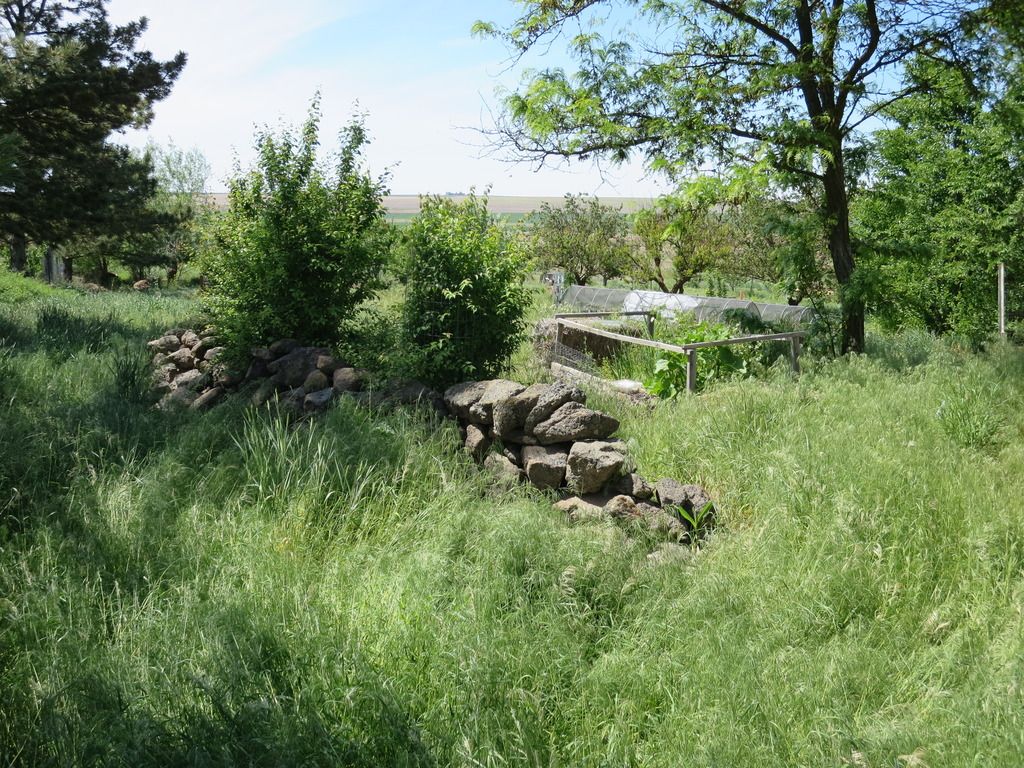




 1
1




"the qualities of these bacteria, like the heat of the sun, electricity, or the qualities of metals, are part of the storehouse of knowledge of all men. They are manifestations of the laws of nature, free to all men and reserved exclusively to none." SCOTUS, Funk Bros. Seed Co. v. Kale Inoculant Co.
 1
1












 1
1
















stalk_of_fennel wrote:
yes he used no irrigation but the man did buy water rights from many of his neighbors land to fill his ponds.
[/quote
Don't know how I managed to miss the first parts of this thread. Now reading it. What excellent information, thanks everyone!
In terrain like Sepps, is it possible for the ponds to fill on their own? I had wondered how his ponds filled initially.
Once full, do they stay full? Is run off from swales enough to keep them full? How does this work?
Is it /feasible to build ponds in an area which has granite sands?












 1
1








Troy wrote:
Getting back to the rock piles...
There is a concept known as an air well that was researched for a while back in the day.
I had mentioned on an earlier thread about the function of rocks as energy syphons and expanded that to a blog on my website: http://pittsburghpermaculture.org/general-thoughts/ideas/rocks-in-the-garden
-Troy
http://pittsburghpermaculture.org
Wow! Thank you for some very fascinating and thought provoking reading material. I found one website that has quite a bit of information on it, have to scroll down past some ads o the first page of the website to get into the good stuff:
http://www.rexresearch.com/airwells/airwells.htm
Nice Blog!
 1
1



















Feral wrote:
It appears that he has established a man-made, but yet natural water collection system that hydrates the land,

Idle dreamer





















 , sad day.
, sad day.








Feral wrote:
Who is the best, most awe inspiring permaculture guru when it comes to water and water usage to maintain land?

Idle dreamer




Emerson White wrote:
So he bought ground water, he pumps water into his system, and up hill, he removed a bunch of water hungry plants, he uses sprinklets to spray water from his system onto plants and dirt, and he may or may not also be diverting a mountain stream. It seems like there is no meaningful and true way to say that he uses no irrigation.
"Limitation is the mother of good management", Michael Evanari
Location: Southwestern Oregon (Jackson County), Zone 7












"Limitation is the mother of good management", Michael Evanari
Location: Southwestern Oregon (Jackson County), Zone 7




SouthEastFarmer wrote:
Thanks Pakanohida - I had missed that part


















Idle dreamer




Bill Kearns wrote:Here's the article written by my friend Kyle published on the PRI site. Kyle's article includes his visit to my place and he talks about the talus garland rock wall we built!
http://permaculture.org.au/2009/11/02/rethinking-water-a-permaculture-tour-of-the-inland-northwest/#comments
Kyle's also been very busy crafting a new website. Fascinating stuff. Especially read his "About the author" section.
https://sites.google.com/site/humanhabitatproject/home

Bill

http://www.turkishbozshepherds.com
http://www.kunepigs.com/
 1
1




Bill Kearns wrote:Here's the article written by my friend Kyle published on the PRI site. Kyle's article includes his visit to my place and he talks about the talus garland rock wall we built!
Kyle's also been very busy crafting a new website. Fascinating stuff.

Why do you feel safe when mankind has only proven to be able to survive 12,000 years at a stretch...? Be prepared for the next probable end: http://www.teomcrote.co.nf
Security: Rhodesian Ridgeback; Animals: Scobies and rabbits; Diet: Born to Run; Religion: trust no one; my best posts/replies so far




 5
5










Permaculture is a gestalt ... a study of the whole. Not just how to produce more and better food, but how human life on the planet affects and is affected by the surrounding environment.
Bill Kearns








This is all just my opinion based on a flawed memory


|
Yes, of course, and I accept that blame. In fact, i covet that blame. As does this tiny ad:
The new purple deck of permaculture playing cards
https://www.kickstarter.com/projects/paulwheaton/garden-cards
|





